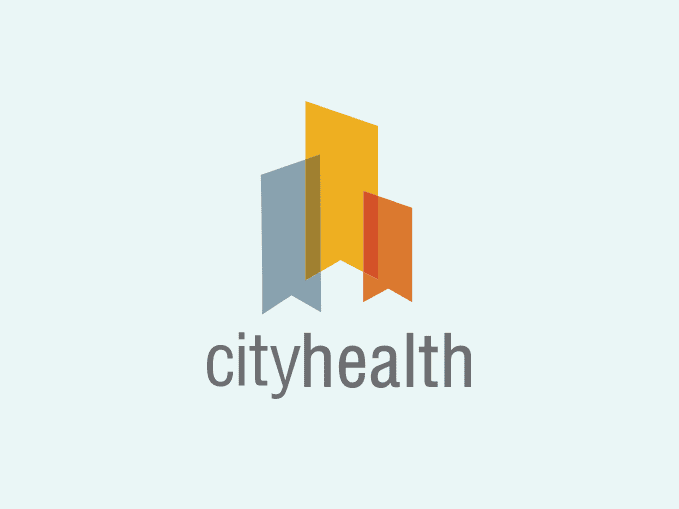Photographs and awards line the walls and shelves in Colleen Bridger’s office at the San Antonio Metropolitan Health District, mementos from her last job, in Orange County, North Carolina.
“[Before,] a big day for me would be one press conference and two meetings,” Bridger said of her job in Orange County, which has a population of just 135,000. When she took over as San Antonio’s Metro Health Director just over one year ago, she knew she would have to adjust to a much faster pace.
Bridger moved fast and aimed high during her first big push for change, successfully spearheading San Antonio’s effort to become the first city in Texas to raise the age for purchasing tobacco products from 18 to 21. She introduced the idea to City Council in November 2017, and it was passed just three months later.
She called the legislation, known as Tobacco 21, the “most significant public health policy that I will ever be involved with.”
Counterparts from the Big Cities Health Coalition, which comprises leaders of America’s largest metropolitan health departments, called the policy success “remarkable” given that little progress implementing Tobacco 21 has been made in other Texas cities despite overwhelming evidence of the positive health impact.
Shelley Hearne, senior advisor to the coalition and visiting professor at the Johns Hopkins Bloomberg School of Public Health, said that Bridger’s leadership on Tobacco 21 “will save countless lives in San Antonio.”
“When we are doing a 10-year anniversary story, I wouldn’t be surprised if Tobacco 21 is still number one on my list of accomplishments,” Bridger said, noting that smoking is the leading cause of preventable death in the U.S. “If there is some sort of ‘most wanted’ list that Big Tobacco keeps – I’m on it.”
Related: Council Votes To Raise Tobacco Purchase Age to 21
While no one necessarily wants to talk about obesity, diabetes, or HIV eradication, Bridger said that San Antonio will never truly address the challenges it faces without working to quickly address these health issues in order to improve residents’ quality of life.
“She has caused us to have a lot of difficult conversations, and has ground the gears of bureaucracy because of those difficult conversations,” Nirenberg said, describing Bridger as “fearless” in her drive toward making San Antonio a healthier community. “No one will blame her for that. It’s exactly what we need to move this city forward.”
Tobacco 21 proved controversial not on its merits but because for some, the move to restrict young adults from purchasing tobacco products represented government overreach. Councilman Greg Brockhouse (D6) said that while he believes that Bridger is “eminently qualified” for her position, they have “fundamental differences regarding the role of government on people’s lives.”
“I worry about for the future of our community when we have a department that tries to legislate social change,” Brockhouse said. “I am going to stand on the opposite side of her, frequently, if for no reason other than that.”
Councilman Greg Brockhouse (D6) (center) stands with Anwar Tahir, President of the Association of Convenience Store Retailers, (left) and Paul Hardin, President of the Texas Food & Fuel Association, to protest the Tobacco 21 Ordinance in front of City Hall on January 10.
Brockhouse was quick to say that when it comes to professionalism and responsiveness to questions about public health initiatives, Bridger “would get an A-plus on that.”
Government’s role in improving public health is a debate that is both “familiar and important,” Bridger said. “When you have tension [between] scientific evidence and political will, it’s a difficult conversation.”
“The public health director should serve as chief health strategist for the community,” Bridger added. “I am a scientist, and I bring up what science says will work, and officials vet that through political frameworks to decide if that’s what they want to do.”
Bridger’s action on Tobacco 21 echoed work she did during more than five years leading the Orange County Health Department, where she implemented a comprehensive rule requiring that all public places be smoke-free. She also oversaw projects designed to prevent drug overdoses and reduce illegal drug use, and created family-centered programs aimed at reducing poverty in the region by addressing community health disparities.
After Bridger left North Carolina in February 2017, the local government had to complete two separate searches to fill her position, and did not fill the spot until 11 months after she resigned.
“It was a pretty high bar, so it was tough shoes to fill,” said Liska Lackey, board chair of the Orange County Health Department and former chief operations officer for Bridger.
At Metro Health, Bridger manages health department staff of 400 with a $44 million budget, a dramatic difference compared to Orange County’s $7 million health department budget.
Bridger is Metro Health’s first permanent director since late 2015; then-director Dr. Thomas Schlenker was fired, and the position was covered in the interim by Dr. Vincent Nathan, who served as assistant director since 2012. Before Bridger took over, she underestimated the effects that having a long-term interim director would have on an organization the size of Metro Health.
“That’s no criticism – you do things differently when you’re doing two jobs” as Dr. Nathan was, Bridger said. “I didn’t realize until I got here that there were a lot of internal fixes that needed to be made, and we are still working on those. We are still figuring out the best way to do what we do.”
Bridger is a self-described lover of budgets, employee empowerment, communication, and efficiency. Because Metro Health is run out of 28 different buildings, and “communication is challenging under the best of circumstances,” shifting to more transparency and inclusion will be key to achieving and maintaining success and creating a “culture of health.”



